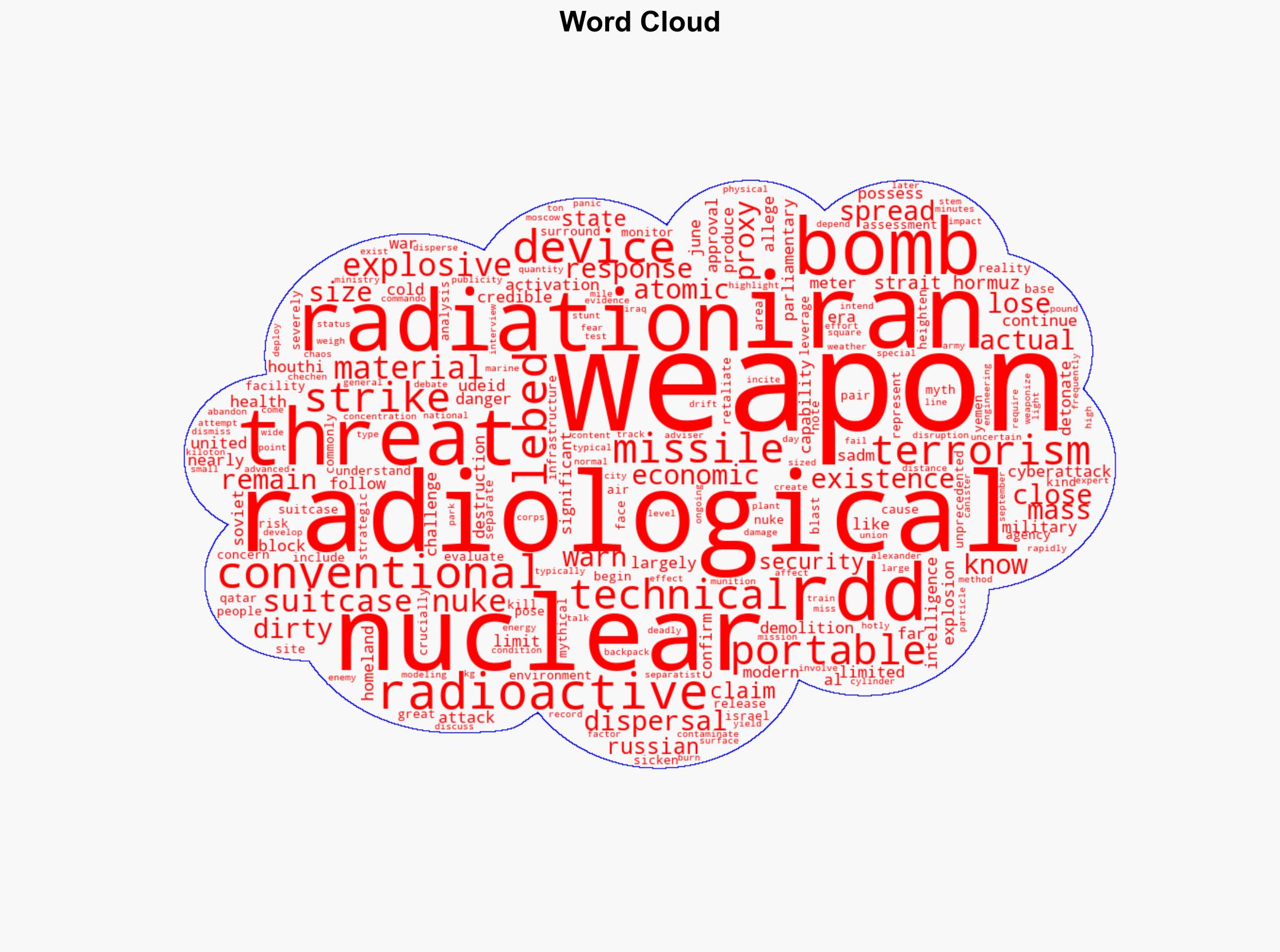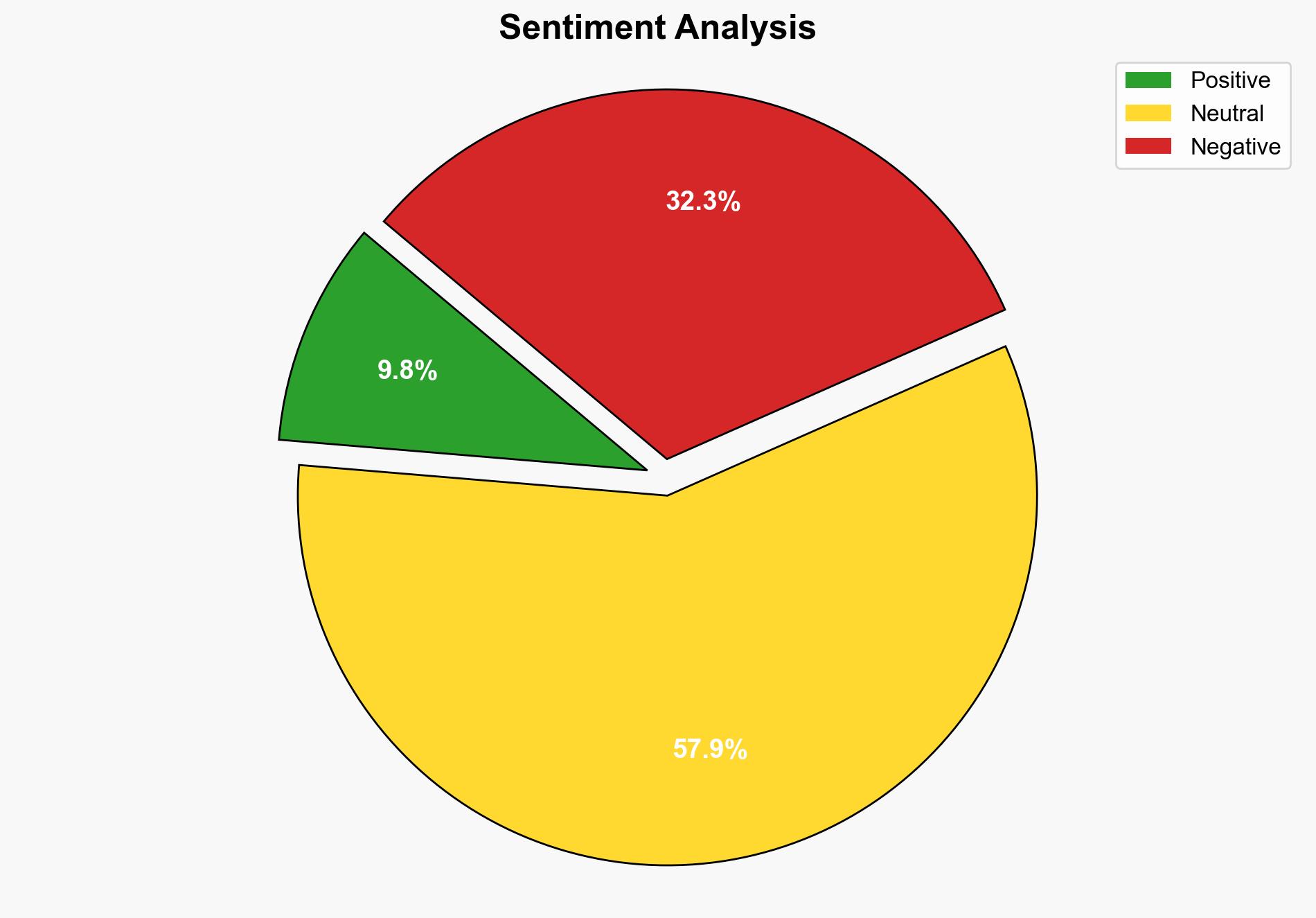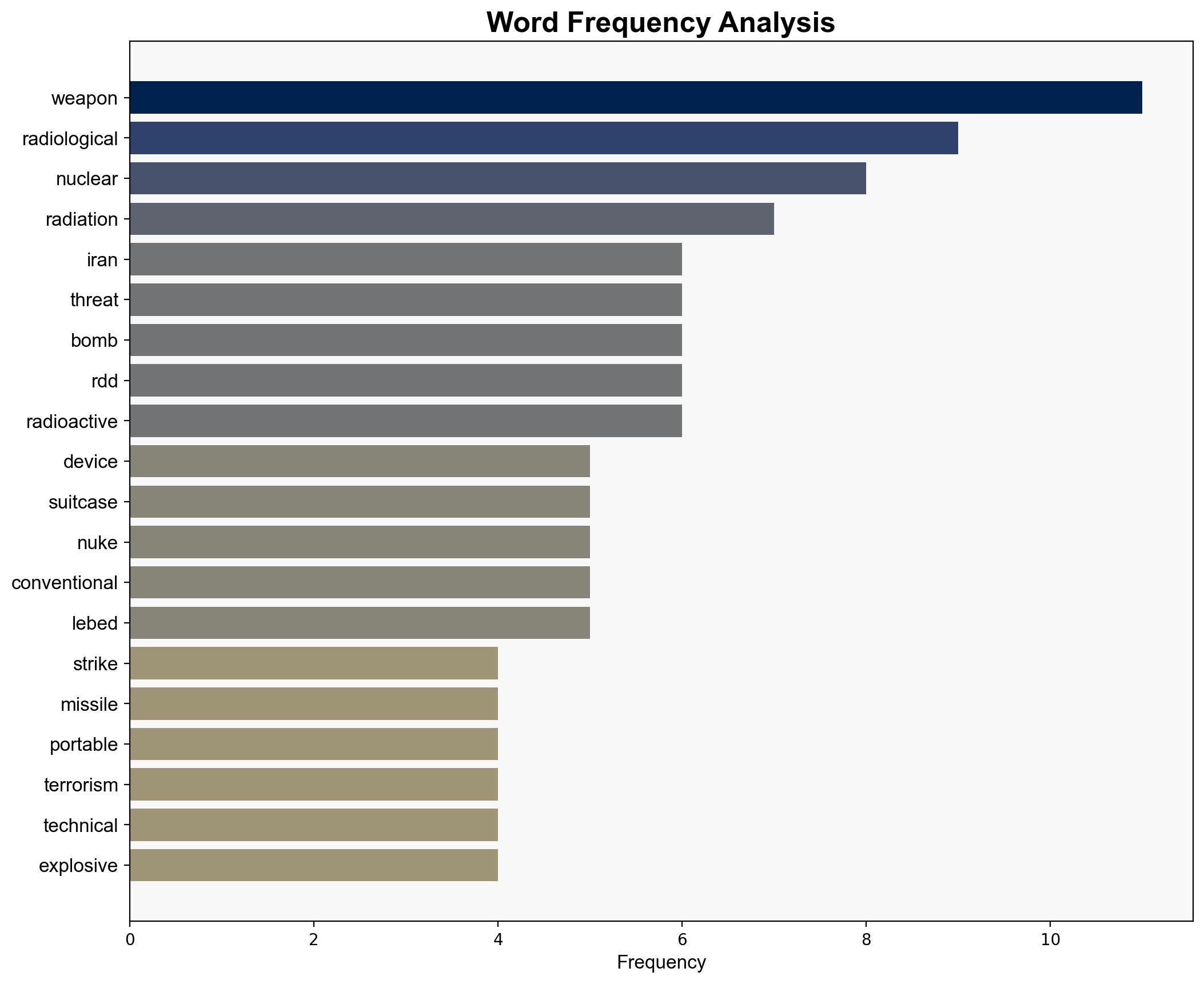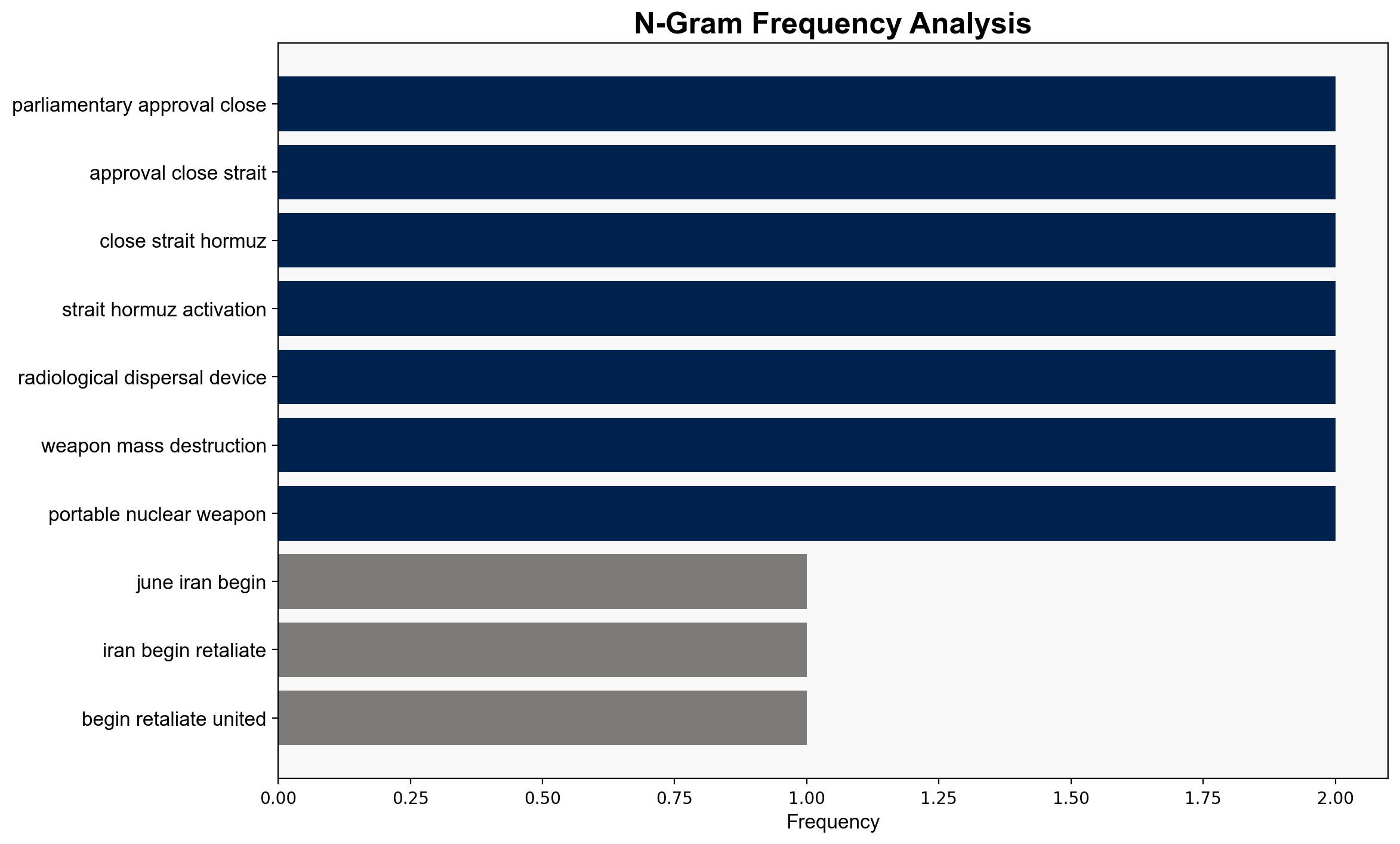The Dirty Bomb Threat Assessing Irans Radiological Retaliation Capabilities After US Nuclear Strikes – Thegatewaypundit.com
Published on: 2025-06-23
Intelligence Report: The Dirty Bomb Threat Assessing Iran’s Radiological Retaliation Capabilities After US Nuclear Strikes – Thegatewaypundit.com
1. BLUF (Bottom Line Up Front)
Iran’s potential use of a radiological dispersal device (RDD), commonly known as a “dirty bomb,” remains a theoretical concern rather than an immediate threat. Current intelligence suggests Iran’s retaliatory capabilities are primarily conventional, focusing on missile attacks and strategic closures, such as the Strait of Hormuz. The likelihood of Iran deploying an RDD is low due to technical and logistical challenges. Recommendations include maintaining heightened surveillance and preparedness for conventional threats while monitoring for any shifts towards unconventional tactics.
2. Detailed Analysis
The following structured analytic techniques have been applied to ensure methodological consistency:
Causal Layered Analysis (CLA)
Surface Events: Iran’s missile attacks and strategic maneuvers in response to US actions.
Systemic Structures: Regional power dynamics, including alliances and economic dependencies.
Worldviews: Iran’s strategic calculus in leveraging conventional military capabilities.
Myths: The persistent narrative of Iran’s potential use of a “dirty bomb.”
Cross-Impact Simulation
The closure of the Strait of Hormuz could significantly impact global oil markets, potentially escalating regional tensions. Missile attacks on US bases could provoke further military responses, increasing instability.
Scenario Generation
Best Case: Diplomatic resolutions reduce tensions, and Iran refrains from further escalation.
Worst Case: Prolonged conflict leads to broader regional instability and economic disruption.
Most Likely: Continued conventional military posturing without escalation to unconventional warfare.
3. Implications and Strategic Risks
The primary risk lies in the potential for miscalculation leading to broader conflict. Cyber threats to infrastructure and economic targets remain a concern. The myth of the “dirty bomb” could incite public panic, even if the actual threat is minimal.
4. Recommendations and Outlook
- Enhance monitoring of Iran’s conventional military movements and cyber activities.
- Strengthen regional alliances to deter further escalation.
- Prepare public communication strategies to counter misinformation about radiological threats.
- Scenario-based projections suggest maintaining readiness for conventional threats while monitoring for shifts towards unconventional tactics.
5. Key Individuals and Entities
Alexander Lebed, Vahid Majidi
6. Thematic Tags
national security threats, cybersecurity, counter-terrorism, regional focus





